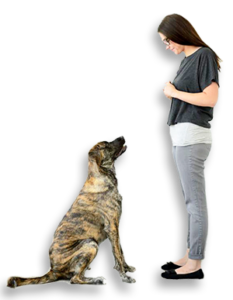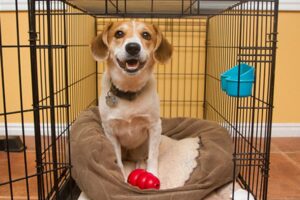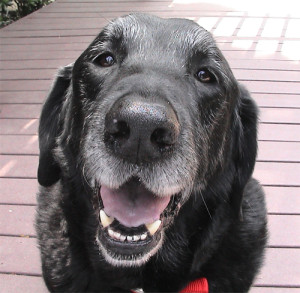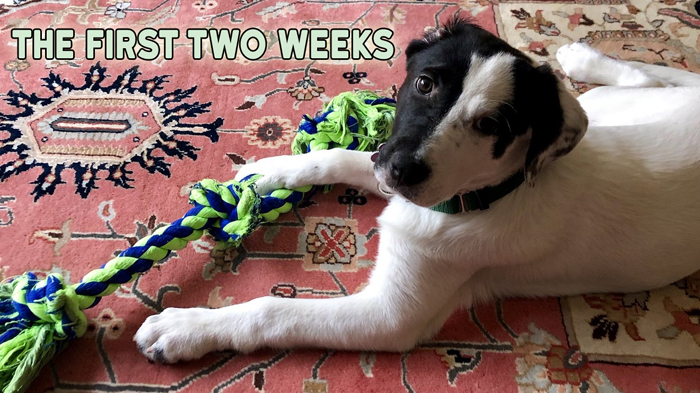Tips For Introducing Your Newly Adopted Dog To Your Home
The secret to being successful when adopting a rescue dog is by first giving the new dog time to adjust to you, your family, the home, and other pets in the new environment — before introducing him to new people, taking him out on any big adventures, etc.
 While we realize every dog is unique and every dog adjusts differently, for the most part we recommend what we call the “Two-Week Shut Down.”
While we realize every dog is unique and every dog adjusts differently, for the most part we recommend what we call the “Two-Week Shut Down.”
Why The Two-Week Shut Down?
The Two-Week Shut Down is a time familiar to a dog’s mind. It mimics the whelping box when first born, when the puppy’s eyes are not open and it relies totally on the mother’s ability to take care of it. By smelling, sensing, and listening, the puppy starts his journey into the new scary world. New adult dogs come into our home the same way. By giving the dog a “time out”, the dog can learn its new world, its new people, and begin to relax and blossom under your care.
While we all want to run out with our new dog and show everyone our new pet, we forget that even an adult dog is now back to a puppy-like mind – all is new. The voices speak a new language, cars might be new, leashes and handling might be new. Even petting and acceptance of a pet is stressful on a new dog. “Who are you? Where did you come from? Where am I going? What is expected of me?” The dog thinks! Just like a newborn baby, we wouldn’t rush out and pass the baby from person to person. We set up a stable and safe environment. Our new dogs are just like that. We also give the rescue dog a bit of time to heal, mentally, and physically, in a safe and comfortable zone.
When new dogs are stressed out and not given that calm environment and period of adjustment, the only way they know how to get their point across is to act out or “misbehave.” The dog may growl or become nippy out of confusion or fear. What is expected of me? Where am I allowed?
How the Two-Week Shutdown works:
For the first two weeks, a dog takes in their new environment. By pushing a dog too fast and throwing too much at the dog, we look like we are not the leaders and the dog can feel it MUST defend itself. We coo, coddle, drag the dog from home to home, from person to person, and the dog has NO idea who WE are. To the dog, you are a stranger. This is the time for the dog to be in a calm atmosphere, getting to see YOU, meet YOU, hear and take in the new sounds and smells of your home.
- Crate the dog in a separate room or limit it to one separate room.

- Leashing is an option. This also teaches the new safe zone when the dog is around you and other humans in the home. You can leash the dog to your belt or under a piece of furniture. This also stops the dog from reacting if you have to get him off of something like the couch. You are not reaching in and grabbing onto him, just tug gently on the leash, say “come” and there you go. No conflict!
- No intense obedience training should be done for the first two weeks — just fun exercise. Maybe throw some toys for fun. Leash the dog if you don’t have a fence outside. Use lunge lines if you have too big a yard. If you have a large enough yard, do not leave the yard with the dog. If you do not have a yard, taking the dog on a walk while leashed is acceptable.
- Avoid car rides, other dogs (unless crated beside them), and no pet stores. (The exception to this is, of course, if the dog needs to go to the veterinarian.)
- Exercise is a must. All dogs need to burn off energy. Do fun toss-the-ball games in your yard or on a lunge line if no fence. Remember to just have fun. Let the dog run and explore in the yard.
- TEACH the dog by doing the shut down, that YOU are the one to look to; that you are now here for the dog! He can trust in you and look to you as its new leader. Then on walks you will see the dog look to you when he sees something, to see what your reaction is, lessening his mind about having to defend or control the environment. He has YOU. The dog now can relax and enjoy the walk more.
- Once exercise/yard time is finished, put the dog back in his/her crate. Let it absorb, think, and rest. If the dog goes to his crate on his own, he is telling you “I need a time out.” Allow him this time. By having the dog out for long periods of time we are forcing the dog to keep accepting all new things. By putting the dog away we are asking him to accept a few things, then go think and absorb. When we get him out later, we introduce a few more things, so it doesn’t overload the dog.
- No new buddies! Do not introduce the dog to other pets for these two weeks. They can be side by side in the crates if you cannot totally separate (not nose to nose for they can feel defensive). The reason it is important not to introduce the new dog to other dog(s) in the home is because some dogs will bond instantly with the other dog(s). This can lead to some other issues, as the dog will look to the other dog(s) for guidance and not YOU!
- Ignore bad behavior. Ignore crying and/or barking. If you run to the dog each time they bark, whine, or cry, you are teaching the dog that doing those things gets your attention. The dog must learn to be secure when you are not there. Use the leash to correct jumping, exploring counters, etc.
- Praise good behavior gently. For example, the dog is sitting nicely next to you. Touch or softly pet the dog “good boy/girl.” Let them know you appreciate GOOD behavior. This makes naughty behavior not so fun if you ignore THAT, but praise the good!
 Literally in two weeks you will see a change in the dog and begin to see its honest and true personality. They will be well behaved and literally shut down themselves these first few weeks. Once the shut down time is over, they relax and the true personality begins to shine through!
Literally in two weeks you will see a change in the dog and begin to see its honest and true personality. They will be well behaved and literally shut down themselves these first few weeks. Once the shut down time is over, they relax and the true personality begins to shine through!
So, please, if nothing else for your new dog, give it the time to LEARN YOU as you are learning who they are! This method works on shy dogs, confident dogs, abuse cases, dogs who were previously chained, rowdy dogs, all temperaments!
They will look to you for guidance. You will gain their trust and show them, calmly and fairly, what this new world is like. They will relax and feel safe. There is no need to force the point that we are its leader. Slow easy guidance, patience, showing them what we want them to do in a new home is the best way to help the new dog adjust. We instill that we are worthy to the dog to be its leader!
So please for the sake of your new dog, slow down – WAY down. Give them a chance to show you who they can really be!
